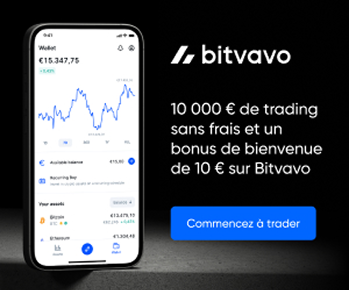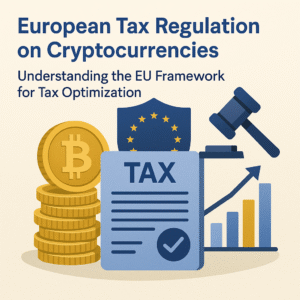Solana (SOL)/Complete Analysis, Functionality, and Future Prospects
Key takeaways
- Significant short-term volatility, with frequent fluctuations.
- Influencing factors : growing adoption, strategic partnerships, and potential regulations.
- Long-term growth potential due to fast and scalable technology.
- Position relative to other major cryptos : competition with Ethereum and Polkadot.
Introduction to Solana
Solana (SOL) is a high-performance blockchain created to provide scalable solutions for decentralized applications (dApps) and smart contracts. Its key feature is its ability to process a large number of transactions per second, while maintaining very low transaction fees, making it stand out compared to other chains like Ethereum. The Solana project was launched in 2020 by Anatoly Yakovenko, a former Qualcomm engineer, with the goal of creating a blockchain capable of overcoming the issues of slow speeds and high costs associated with traditional blockchains. Through its innovative Proof of History (PoH) consensus mechanism, Solana enables fast and efficient transactions, while reducing energy consumption. Solana also stands out for its rapidly growing ecosystem, with an increasing number of dApps, NFTs, and DeFi projects being deployed. This project has attracted many developers and investors looking for alternatives to Ethereum, particularly for applications requiring high data processing capabilities. To buy Solana (SOL) tokens, you can visit platforms like Binance, Kraken, or FTX, where you will find various options for acquiring and storing this crypto.How Does Solana Work ?
Solana stands out mainly due to its unique Proof of History (PoH) consensus mechanism, which creates a chronological record of events without needing an external synchronization source. Unlike traditional blockchains that use slow and costly processes to reach consensus, Solana records transactions sequentially, improving the efficiency of the network and its ability to handle a large volume of transactions in real-time. The Solana network also uses Proof of Stake (PoS) in conjunction with PoH, enabling users to secure the blockchain by validating transactions and participating in consensus. This dual mechanism ensures both fast transactions and network security. Solana is compatible with the Ethereum Virtual Machine (EVM), allowing developers to use Ethereum tools to build applications on Solana while benefiting from its increased speed. Some key technical features of Solana :- Blockchain type / consensus : Proof of History (PoH) and Proof of Stake (PoS)
- EVM compatibility : Yes, allows Ethereum dApps to be ported to Solana
- Technical specifics : High interoperability, fast transactions, low fees, and the ability to handle millions of transactions per second.
- Layer 2 : The network is designed to prevent congestion even during high demand.
History and Creation of the Project
Solana was launched in 2020 by Anatoly Yakovenko, a former Qualcomm engineer, alongside co-founders Greg Fitzgerald, Raj Gokal, and Stephen Akridge. The project was born out of the desire to solve scalability problems that affected existing blockchains like Ethereum. Yakovenko introduced the concept of Proof of History (PoH) to increase transaction speeds without compromising security, a solution that was revolutionary at the time. The Solana network was initially launched in March 2020 after several months of development and testing. Before going live, the crypto community witnessed several crucial milestones : the ICO (Initial Coin Offering), the setup of its mainnet (the official launch of the network), and funding rounds that attracted investors like Andreessen Horowitz and Polychain Capital. Since its launch, Solana has experienced exponential growth. Numerous DeFi (decentralized finance) projects, NFTs, and dApps have deployed on its network. Solana has differentiated itself through strategic partnerships with leading companies in the crypto ecosystem, including FTX, Serum, and Chainlink.Platforms to buy [crypto]
Founders and Team
What Makes [Nom cryptomonnaie] Unique?

Solana has established itself as one of the fastest-performing blockchains, offering innovative solutions for decentralized applications and fast, low-cost transactions. Its unique consensus mechanism and rapidly expanding ecosystem make it a key player in the crypto world. With applications in decentralized finance, NFTs, and smart contracts, Solana continues to attract attention from developers and investors alike. The future of Solana looks promising, especially as the network continues to strengthen with strategic partnerships and growing adoption. However, challenges remain, particularly in terms of competition from other blockchains and the ongoing optimization of security and scalability.
Solana may well become one of the pillars of blockchain technology in the long run, providing scalable solutions for the digital economy of tomorrow.

- What is the purpose of the Solana (SOL) token ? The SOL token is used to pay transaction fees on the Solana network, participate in blockchain governance, and secure the network as a validator.
- Is it a good investment ? Solana presents strong growth potential due to its speed, low transaction fees, and growing adoption in decentralized applications. However, like any cryptocurrency, it carries significant volatility.
- How does it differ from Ethereum ? Unlike Ethereum, which uses a Proof of Work (PoW) mechanism, Solana relies on Proof of History (PoH) and Proof of Stake (PoS), enabling faster transactions at a lower cost.
- Where can I store SOL tokens ? SOL tokens can be stored in Solana-compatible wallets like Phantom or Sollet, as well as on exchange platforms like Binance and Kraken.
- Is the Solana project secure ? Yes, Solana uses a hybrid consensus mechanism of Proof of History and Proof of Stake, combining speed and security. The network is continuously updated to mitigate vulnerabilities.
Disclaimer :
Trading is risky and you may lose all or part of your capital. The information provided does not constitute financial advice and/or an investment recommendation
Top-Rated Platforms to Trade Crypto
Explore Our Financial Views on the Market
Crypto News & Insights
Digital Assets Forum 2026 returns to
The Digital Assets Forum (DAF), one of Europe’s most respected...
Blockchain and Cryptocurrency Conference (B2C’ 2025):
The Blockchain and Cryptocurrency Conference (B2C’ 2025) is scheduled for...
European Tax Regulation on Cryptocurrencies: Understanding
The regulation of the cryptocurrencies market in the European Union...













